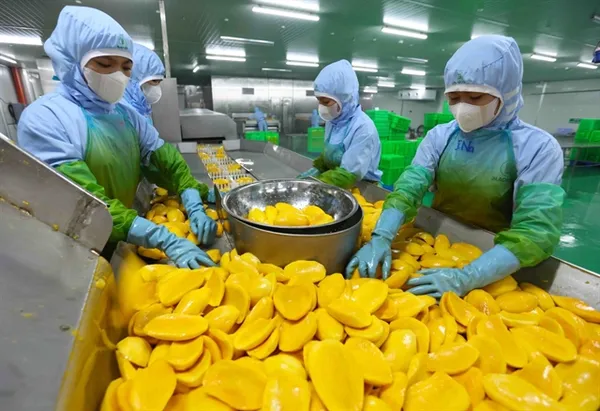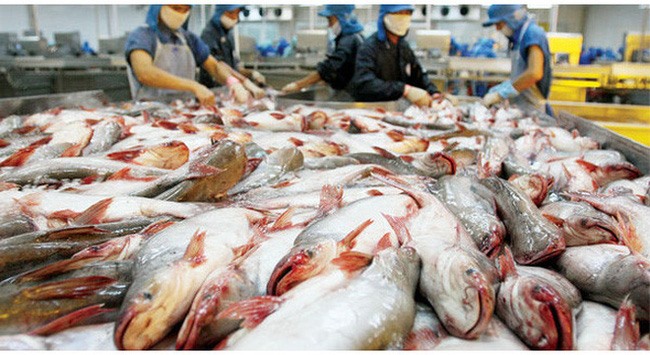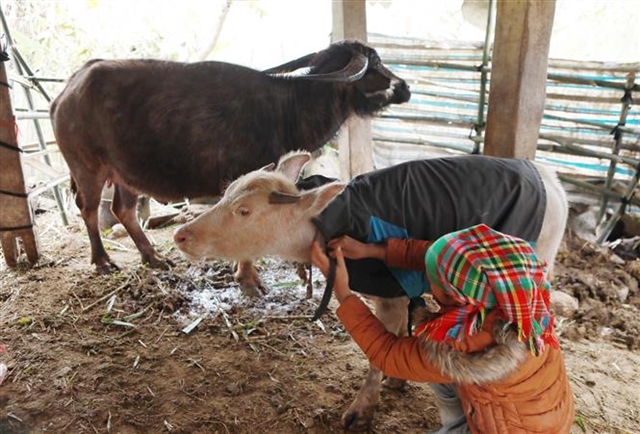 Economy
Economy

Hùng Vương Corporation (HVG), one of the biggest seafood processors in Việt
 |
| HVG plans to divest 100 per cent of its capital from Sao Ta Food Joint Stock Company and 50 per cent of its capital from Việt Thắng Feed Joint Stock Company. — Photo cafef.vn |
The company incurred losses of VNĐ49 billion (US$2.2 million) and VNĐ713 billion in the 2016-2017 and 2017-2018 fiscal years. A fiscal year begins in October and ends in September of the following year.
Shares of HVG, which is listed on the HCM Stock Exchange under code HVG, are down 36 per cent compared to the beginning of this year and down 45.4 per cent compared from their peak for 2018 so far on January 10, due to the company’s weak business performance.
According to an official letter sent by HVG to the State Securities Commission in late March, HVG plans to divest capital from some of its subsidiaries and sell real estate to offset losses.
The company will divest 100 per cent of its capital from Sao Ta Food Joint Stock Company and 50 per cent of its capital from Việt Thắng Feed Joint Stock Company. The divestment plans have been completed.
HVG also plans to sell some of its real estate assets, including the two land lots at
The company will also close some ineffective seafood processing factories due to the lack of raw materials.
It also plans to negotiate with banks for financial support, persuading them to keep funding medium-long term capital to help complete HVG’s uncompleted projects. At the same time, HVG also recommend banks provide interest rate incentives for its current debts.
The main causes for the increased losses include a material shortage.
In 2017, export prices of pangasius fillets soared to the highest level in the past 10 years. However, as the market demand increases, the supply of raw fish is decreasing every day, the company said in its official letter.
HVG has been facing raw material shortages since the second half of 2016. The company’s 11 factories with 15,000 employees are operating at a very modest level, down 50 per cent from full capacity, mainly recycling goods in the warehouse to maintain export.
Insufficient materials, large fixed costs and the need to pay labourers during a shutdown in the production period, increased HVG’s production costs by 30 per cent.
Rising export prices cannot offset the cost of production, which was the main reason for the loss, HVG said in the letter.
The company also blamed interest expenses and financial-related pressure from unfinished investment projects for recent losses.
With the approval of the Ministry of Agriculture and Rural Development, the support of the authorities of the southern provinces of An Giang, Long An and Bình Định, as well as commitments from banks, from 2015 to the end of 2017, HVG has implemented development projects on hi-tech pig breeding and constructed cold storage with 60,000 pallets, fully operated by robots.
Up to now, some projects have been completed up to 80 per cent, but disbursement from banks has been postponed. Some projects required the short-term capital of the company without any support from the banks.
Total capital committed by the bank for the above projects is VNĐ1.5 trillion, equivalent to 70 per cent of the total investment of the projects. But until now, only VNĐ484 billion has been disbursed, below one third of the commitment value.
Total capital spent on the projects of the company was up to VNĐ640 billion, extracted from its short-term capital, with an average interest rate of 9 per cent per year.
This caused a serious capital imbalance for the HVG, the company said. While unfinished projects have yet to become profitable, the company still has to bear the cost of rising interest every day.
Although the total short-term and long-term outstanding loans as of September 30, 2017 decreased by VNĐ969 billion, or 11 per cent, compared to the beginning of the period, the interest expense of the whole fiscal year 2016-2017 increased by 8 per cent. — VNS




